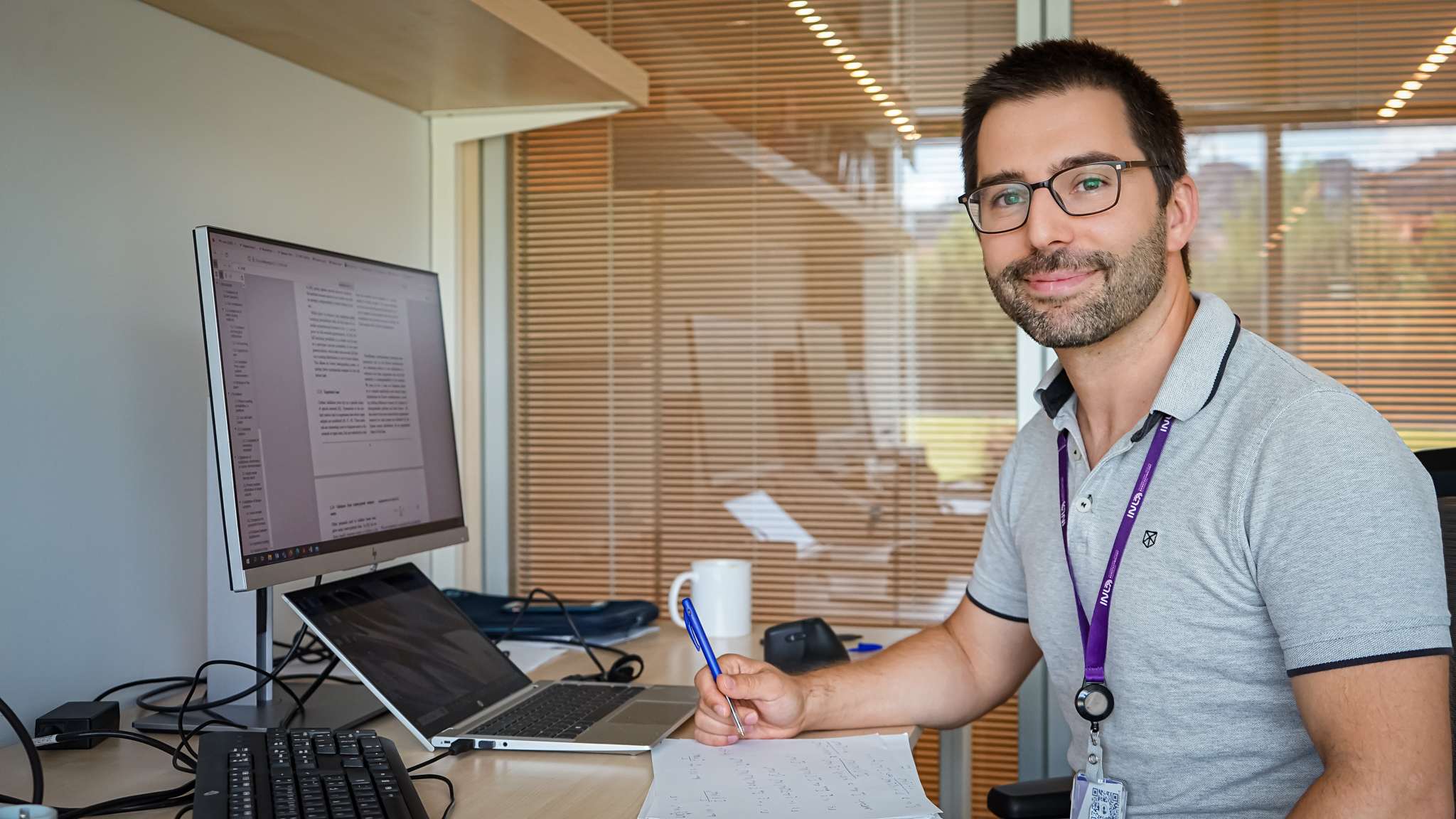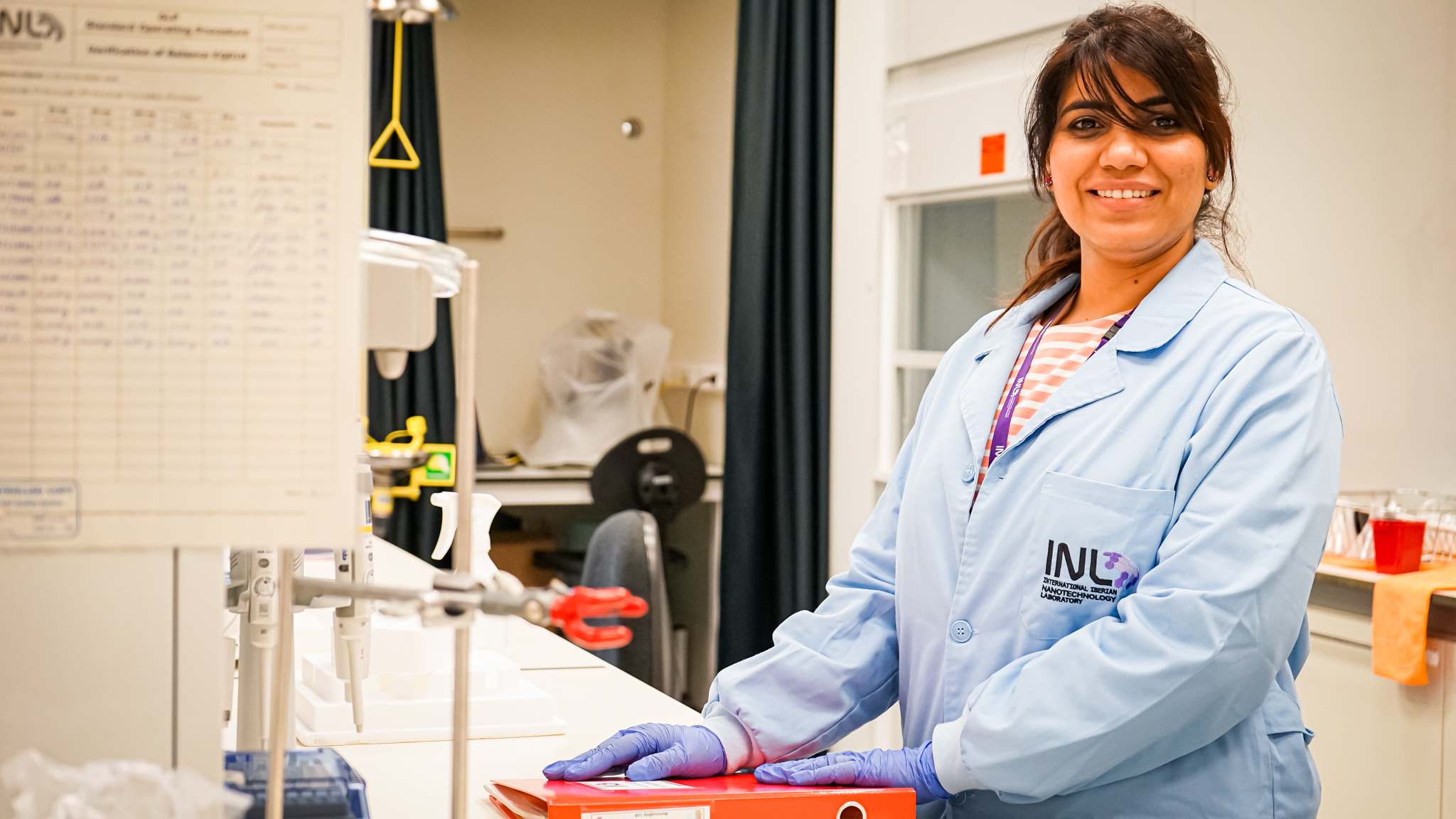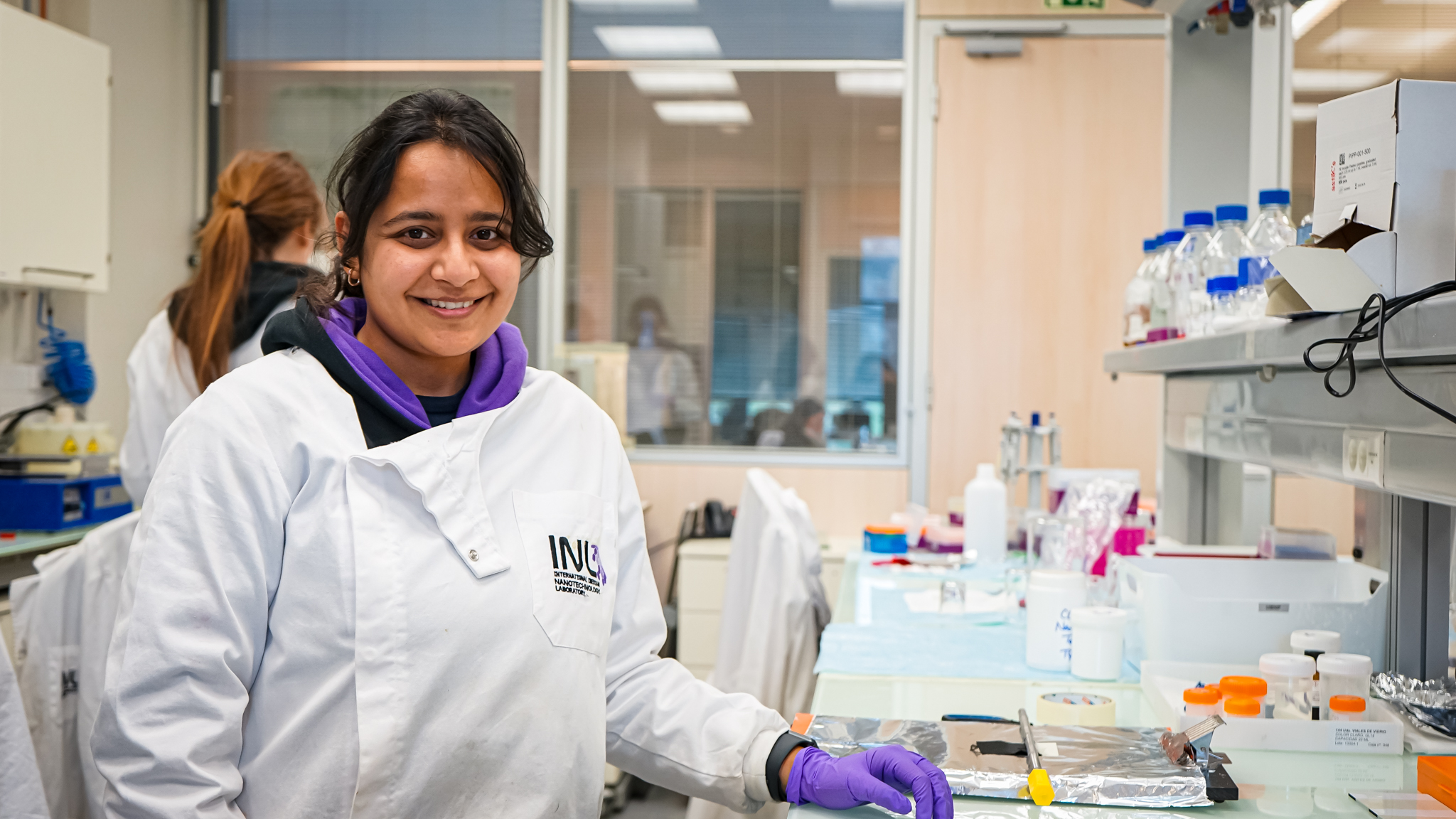
Revolutionizing quantum technologies – INL researcher, Leonardo Novo, published groundbreaking findings in Nature Photonics
July 7, 2023
Leonardo Novo, Staff Researcher at the Quantum and Linear-Optical Computation, has just published a scientific paper in the renowned journal Nature Photonics entitled “Boson bunching is not maximized by indistinguishable particles”.
In this work, the team proposed an experiment that contradicts common knowledge on the so-called bunching property of photons. The observation of this abnormal effect seems to be within reach of today’s photonic technologies. The quantum world is indeed very complex to understand, and today we meet Leonardo so he can explain his most recent work on Boson bunching.

Leonardo, congratulations on your latest work published in Nature Photonics! Can you explain what Boson bunching is?
Before explaining Boson bunching let me just mention what a Boson is. For all we know, the fundamental particles that we encounter in our universe are divided into two groups: the bosons and the fermions. The ‘most famous’ bosons are the photons, the particles from which light is made, whereas electrons, protons or neutrons are fermions.
There is a very powerful principle in quantum mechanics that allows us to predict many phenomena, which, in very simple terms, says that fermions have the tendency to avoid each other while bosons have the tendency to stay together. This can be tested in the lab: a simple experiment involving two photons and a beam-splitter, which is usually a piece of glass that can divide a light beam into two paths, reveals the tendency for the two photons to ‘stick together’ in the same path or, in other words, to ‘bunch’. This phenomenon cannot be explained by classical physics. For example, if we try to model the photon as a small ball that can go in one path or another, we cannot reproduce the results obtained from experiments involving photons. We need quantum mechanics to explain this.
Can you tell us more about your recent discovery? How does it change what physicists thought about this phenomenon?
What physicists know from small experiments involving photons is that the quantum effects that explain boson bunching are mostly present when the photons have exactly the same properties, that is when there is no way to tell which photon is which. The interesting thing is that if we do the same experiments with distinguishable photons, for example, one corresponding to red light and another to blue light, we no longer see this ‘boson bunching’ effect. In that case, the results of the experiment are the same as if we modelled the photons as small balls governed by the laws of classical physics.
For this and many other reasons, physicists believed that the more indistinguishable the photons are, the more this ‘photon bunching’ effect would be visible. What we showed is that this is not always the case. In a way, this changes our view of how photons are supposed to behave.

One might ask why such discovery is relevant. What are the applications of this discovery for science and technology?
Understanding how photons behave is crucial for the development of new quantum technologies. Photons are already being used to establish more secure ways to communicate, using quantum cryptography. They are also very important in quantum metrology, a field which aims at developing more precise measurement techniques. Many labs in the world are also trying to build photonic quantum computers, which may solve certain problems faster than our standard computers. We believe our discovery may be used to test the capabilities of these devices and how precise they are. We also hope it may inspire the development of new quantum metrology techniques because some of them directly exploit the tendency of photons to bunch.
How did you come up with this idea? And did you have a ‘Eureka’ moment?
I think there were several small “Eureka” moments throughout this project, coming from discussions with my collaborators from ULB in Brussels. Perhaps the most interesting one was when we realised that a recent result in pure mathematics (that at first sight did not seem to have anything to do with physics) had a very concrete and surprising physical meaning related to photon bunching. The translation of this mathematical result into physics and the explanation of this effect using quantum mechanics was the core of our work.
We were also happy when we realised that the physical experiment that would demonstrate this ‘anomalous’ photon bunching phenomenon we found is relatively simple and could in principle be done with current technology.


